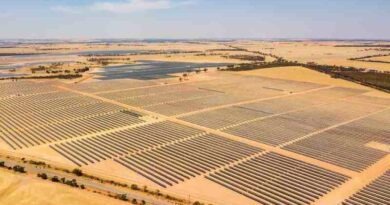How Japan is revolutionising pig farming with food waste? An ecofriendly approach towards sustainability
From an early age, Koichi Takahashi envisioned a world where human ingenuity and nature coexist harmoniously. The focus of his efforts was to revolutionise pig farming in Japan by turning food waste into high-quality pig feed. This method not only minimizes waste but also lowers greenhouse gas emissions and provides a cost-effective substitute for imported feed.
By converting food waste into nutritious feed, Japan tackles both environmental and economic issues.
Takahashi founded the Japan Food Ecology Center with a bold vision: to utilise surplus human food as feed for pigs, thereby supporting a circular economy. With Japan’s small size and limited arable land, the country faces significant challenges in food self-sufficiency. According to BBC reports, it imports about two-thirds of its food and three-quarters of its livestock feed while discarding 28.4 million tonnes of food annually, much of it still edible. This waste not only incurs high environmental and economic costs but also contributes to Japan’s significant greenhouse gas emissions.
Revolutionise pig farming: The power of fermentation
In response, Takahashi and his team developed an innovative solution using Japan’s ancient expertise in fermentation. By employing lactic acid fermentation, they created a liquified pig feed product, affectionately dubbed “ecofeed.” This ecofeed significantly reduces greenhouse gas emissions—by 70% compared to imported feed—and offers a longer shelf life while being nutritionally beneficial for pigs.
Revolutionising the food waste process
The Japan Food Ecology Center processes approximately 40 tonnes of food waste daily, including byproducts from supermarkets, department stores, and manufacturers. This waste is sorted, shredded, sterilised, and fermented into ecofeed. The resulting product not only costs half as much as conventional feed but also improves the quality of pork produced, leading to a burgeoning market for eco-friendly pork in restaurants and supermarkets across Japan.
Expanding the environmental impact
Takahashi’s approach extends beyond pig feed. The centre also engages in biogas production, converting food waste into renewable energy. This process generates electricity for 1,000 households and produces nutrient-rich agricultural fertiliser from the byproducts.
With his method proving both profitable and sustainable, Takahashi has allowed others to replicate his technology, spreading his model’s impact. The centre processes over a million tons of ecofeed annually and serves as a global exemplar of how environmental efforts can be economically viable.
A culinary showcase of sustainability
Visitors to the Japan Food Ecology Center often leave impressed by the facility’s efficiency and the quality of its pork. Takahashi concludes each tour with a meal of tonkatsu-style pork, showcasing the delicious results of his innovative, eco-friendly approach. By demonstrating that environmental sustainability and profitability can go hand-in-hand, Takahashi is inspiring a new era of circular economy practices, proving that saving the planet can also be good for business.
Source: timesofindia.indiatimes.com




